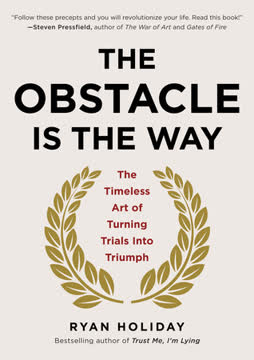Key Takeaways
1. Surround Yourself with the Best: The Key to Success
"It's not the how or the what but the who."
Success through people. The most successful leaders, like Jeff Bezos of Amazon and Roger Agnelli of Vale, attribute their extraordinary achievements to their ability to surround themselves with exceptional talent. They recognize that in today's complex and rapidly changing business environment, having the right people is more crucial than strategy or execution.
Commitment to talent. These leaders demonstrate an unwavering commitment to hiring, developing, and retaining the best. They implement rigorous selection processes, invest heavily in talent development, and create cultures that attract and retain top performers. For example:
- Amazon's hiring philosophy: "It would be impossible to produce results in an environment as dynamic as the internet without extraordinary people."
- Vale's approach: Implementing meritocracy and objective assessments for all senior appointments.
Long-term perspective. Successful leaders maintain a long-term view on talent, often making bold hiring decisions even during challenging times. They understand that investing in top talent pays dividends in the long run, enabling their organizations to outperform competitors and adapt to changing market conditions.
2. Overcome Internal Biases in People Decisions
"We have the wrong brain and the wrong education to get these decisions right."
Hardwired biases. Our brains are evolutionarily programmed to make quick, instinctive decisions based on similarity and familiarity. This primitive wiring often leads to suboptimal people choices in today's diverse and complex work environments. Key biases include:
- WYSIATI (What You See Is All There Is): Making judgments based on limited information
- Overconfidence: Believing we're better at assessing people than we actually are
- Inertia: Reluctance to make necessary personnel changes
Strategies to overcome biases:
- Acknowledge your biases and actively work to counteract them
- Use structured assessment processes and checklists
- Seek diverse perspectives and involve multiple assessors
- Make formal commitments to evaluate team members regularly
- Think like a trader: Be willing to cut losses and invest in new talent
Education gap. Most managers lack formal training in assessing and developing talent. To improve:
- Pursue education and training in talent management
- Learn from best practices in fields like executive search
- Stay updated on the latest research in leadership and talent development
3. Navigate External Challenges in Talent Acquisition
"The key to outstanding performance and fulfillment—in both work and life—is the ability to surround oneself with outstanding people."
The other GDP. Three major factors are creating unprecedented challenges in talent acquisition:
- Globalization: Increased competition for talent across borders
- Demographics: Aging workforce and shrinking talent pools
- Pipelines: Inadequate development of future leaders
War for talent. These factors combine to create the toughest war for talent in history. Organizations must adapt by:
- Expanding their search for talent globally
- Developing strategies to attract and retain younger workers
- Investing heavily in leadership development programs
Opportunities in challenges. While these challenges are daunting, they also present opportunities for individuals and organizations who can adapt. Those who excel at identifying, developing, and retaining top talent will have a significant competitive advantage.
Key strategies:
- Develop a global mindset in talent acquisition
- Create attractive work environments for diverse generations
- Implement robust succession planning and leadership development programs
4. Identify and Assess Potential in Candidates
"We're entering a new era of talent selection."
Focus on potential. In today's rapidly changing business environment, past performance and specific skills are less predictive of future success. Instead, focus on assessing a candidate's potential to grow and adapt. Key indicators of potential include:
- The right motivation: Commitment to excellence and desire to contribute
- Curiosity: Seeking new experiences, knowledge, and feedback
- Insight: Ability to gather and make sense of new information
- Engagement: Connecting emotionally with others and inspiring commitment
- Determination: Persistence in the face of challenges
Effective assessment techniques:
- Conduct structured behavioral interviews
- Use rigorous reference checks
- Employ psychometric assessments
- Look for unconventional résumés that demonstrate adaptability
Balancing factors. While potential is crucial, don't ignore other important elements:
- Intelligence: Ensure candidates meet the threshold IQ for complex roles
- Values: Assess alignment with organizational culture and ethics
- Emotional intelligence: Evaluate self-awareness, empathy, and social skills
- Specific competencies: Consider the eight key leadership competencies (e.g., strategic orientation, results orientation, team leadership)
5. Develop and Integrate High-Potential Talent
"Hiring batting average."
Accelerated integration. Proper onboarding and integration are crucial for new hires' success. Implement a structured integration process:
- Prepare before the start date: Share critical information about the organization
- Set clear expectations and priorities
- Facilitate key relationships across the organization
- Provide regular check-ins and feedback during the first year
Development through complexity. Help high-potential talent grow by exposing them to increasingly complex challenges:
- Rotate them through different functions, geographies, and business units
- Assign them to challenging projects outside their comfort zone
- Provide opportunities to lead cross-functional teams
Focused skill-building. Concentrate on developing the most critical skills for each individual and the organization:
- Identify each person's "spiky" strengths and areas for improvement
- Align development efforts with organizational strategy and individual career goals
- Emphasize emotional intelligence and leadership competencies
Measure and track progress. Implement systems to assess the effectiveness of your talent decisions:
- Calculate and monitor your "hiring batting average"
- Conduct regular performance reviews and 360-degree feedback
- Adjust development plans based on progress and changing needs
6. Build Diverse and Effective Teams
"The secret to successfully weathering any storm is to keep your long-term perspective."
Team effectiveness. Individual talent is crucial, but team dynamics ultimately determine success. Focus on six key team competencies:
- Balance: Diverse skills and perspectives
- Alignment: Shared goals and values
- Resilience: Ability to overcome challenges
- Energy: Ambitious and proactive approach
- Openness: Willingness to embrace new ideas
- Efficiency: Optimal use of time and resources
Leverage diversity. Embrace diversity as a powerful tool for team success:
- Seek out team members with varied backgrounds, experiences, and thinking styles
- Actively work to overcome biases and create an inclusive environment
- Educate team members on the value of diverse perspectives
Culture of collaboration. Foster a culture that promotes teamwork and collective success:
- Implement compensation systems that reward collective achievement
- Encourage knowledge sharing and cross-functional collaboration
- Celebrate team successes and learn from failures together
Adapt to challenges. Use crises and difficult times as opportunities to strengthen your team:
- Maintain a long-term perspective during downturns
- Be selective about cuts and continue investing in key talent
- Use challenges to identify and develop future leaders
7. Extend Great People Decisions to Society
"If we only have successful companies, we will have a prosperous society, but not a great one."
Beyond business. Apply best practices in people decisions to broader societal institutions:
- Government and public service
- Non-profit organizations
- Educational institutions
- Religious organizations
Case study: Singapore. Learn from Singapore's approach to talent management in the public sector:
- Rigorous assessment and selection processes for civil servants
- Extensive scholarship programs and development opportunities
- Competitive compensation to attract and retain top talent
Leadership in all sectors. Encourage the best talent to pursue leadership roles in various sectors of society:
- Promote the importance of great people decisions in all organizations
- Support leadership development programs in non-profit and public sectors
- Advocate for merit-based selection processes in political and social institutions
Personal responsibility. Take an active role in improving people decisions in your community:
- Volunteer for leadership positions in local organizations
- Mentor and develop young talent in various fields
- Promote best practices in talent management wherever you have influence
8. Embrace the Fourth Era of People Decisions: Focus on Potential
"I believe we're now witnessing the dawn of a fourth era of people decisions, in which the focus is rapidly shifting to potential."
Evolution of talent selection. Understand the four eras of people decisions:
- Physical strength (prehistoric to early 20th century)
- Intelligence, experience, and performance (early to mid-20th century)
- Competencies (late 20th century to early 21st century)
- Potential (emerging now)
Why potential matters. In today's rapidly changing world, the ability to adapt and grow is more crucial than ever:
- Jobs and required skills are evolving at an unprecedented pace
- Past performance in a specific role is less predictive of future success
- Organizations need leaders who can navigate uncertainty and complexity
Identifying potential. Look for key indicators of potential in candidates:
- Learning agility: Ability to quickly acquire new skills and knowledge
- Adaptability: Comfort with change and ambiguity
- Growth mindset: Belief in the ability to develop and improve
- Resilience: Capacity to bounce back from setbacks
Balancing act. While focusing on potential, don't completely disregard other important factors:
- Ensure a baseline of necessary skills and experience
- Consider cultural fit and alignment with organizational values
- Assess current performance alongside future potential
Develop for potential. Create systems and cultures that nurture potential:
- Provide diverse experiences and challenging assignments
- Offer continuous learning opportunities and resources
- Encourage calculated risk-taking and learning from failure
- Implement mentoring and coaching programs to support growth
By embracing this new era of people decisions and focusing on potential, individuals and organizations can better prepare for an uncertain future and unlock unprecedented levels of talent and success.
</instructions>
Last updated:
Review Summary
"It's Not the How or the What but the Who" receives positive reviews for its insights on hiring and surrounding oneself with top talent. Readers appreciate the practical advice, real-world examples, and focus on the importance of people decisions in organizational success. The book's short, essay-style chapters make for an easy read. While some find it basic or lacking depth, many recommend it for managers, business owners, and HR professionals. Critics note it may serve as an advertisement for the author's company, but most agree it offers valuable perspectives on talent management and leadership.
Similar Books










Download PDF
Download EPUB
.epub digital book format is ideal for reading ebooks on phones, tablets, and e-readers.




